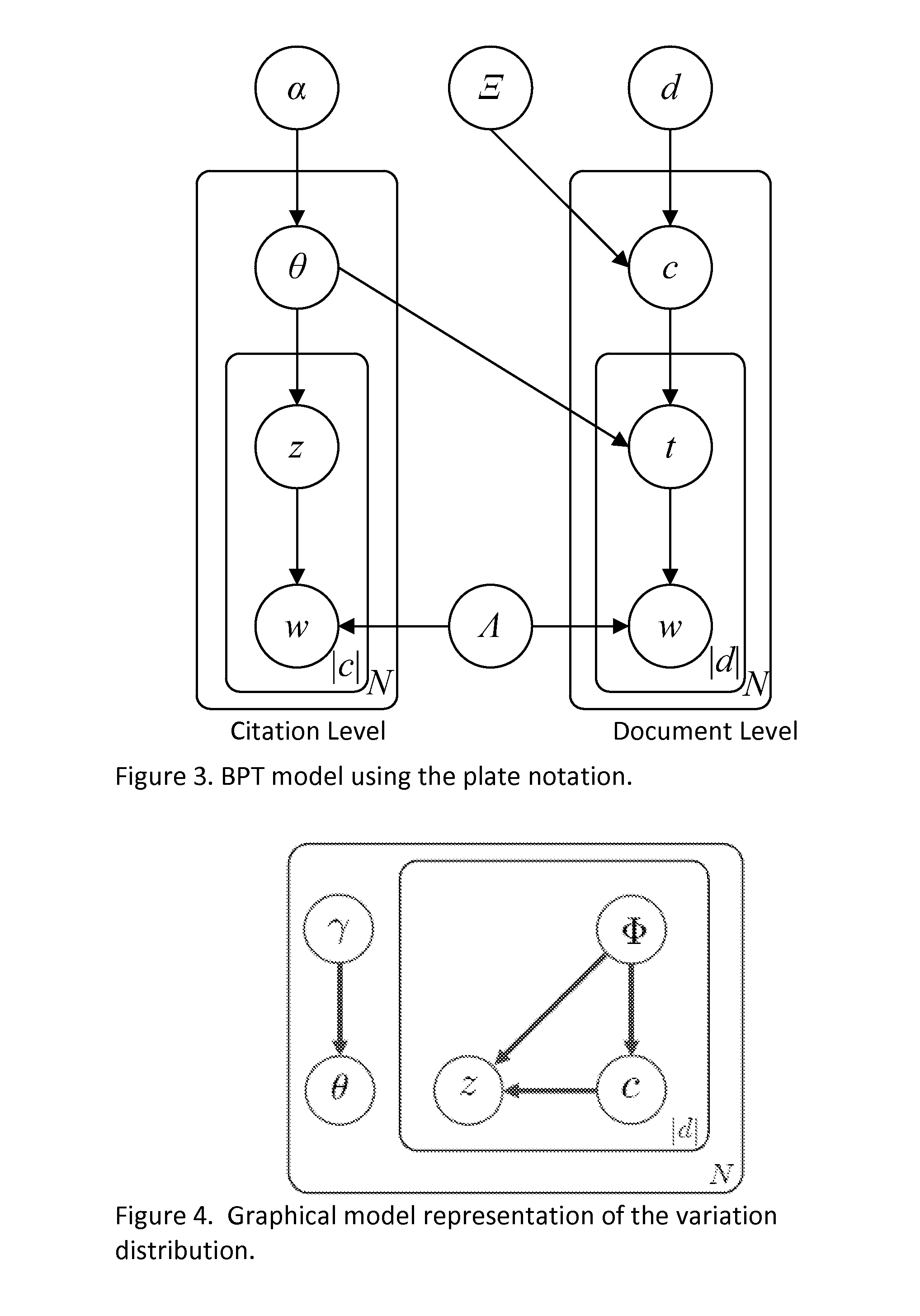Knowledge discovery from citation networks
- Summary
- Abstract
- Description
- Claims
- Application Information
AI Technical Summary
Benefits of technology
Problems solved by technology
Method used
Image
Examples
Embodiment Construction
[0165]Bernoulli Process Topic Model
[0166]The Bernoulli Process Topic (B PT) model is a generative probabilistic model of a corpus along with the citation information among the documents. Similar to the existing topic models, each document is represented as a mixture over latent topics. The key differences from the existing topic models are that the topic distributions of the documents are modeled at two levels (document level and citation level) by differentiating the two different roles and the multi-level hierarchical structure of the citation network which is captured by a Bernoulli random process.
[0167]Suppose that the corpus consists of N documents {dj}j=1N in which M distinct words {wi}i=1M occur. A word is represented by a unit vector that has a single entry equal to 1 and all other entries equal to 0. Thus, the l-th word in the vocabulary is represented by an M-dim vector w where wl=1 and wh=0 for h≠l. The s-th document ds is a sequence of the Ls words denoted by ds=(ws1, ws...
PUM
 Login to View More
Login to View More Abstract
Description
Claims
Application Information
 Login to View More
Login to View More - R&D
- Intellectual Property
- Life Sciences
- Materials
- Tech Scout
- Unparalleled Data Quality
- Higher Quality Content
- 60% Fewer Hallucinations
Browse by: Latest US Patents, China's latest patents, Technical Efficacy Thesaurus, Application Domain, Technology Topic, Popular Technical Reports.
© 2025 PatSnap. All rights reserved.Legal|Privacy policy|Modern Slavery Act Transparency Statement|Sitemap|About US| Contact US: help@patsnap.com



